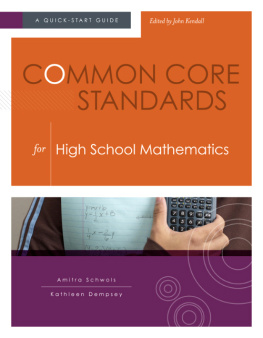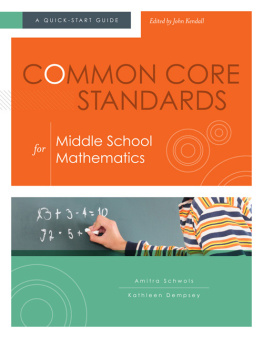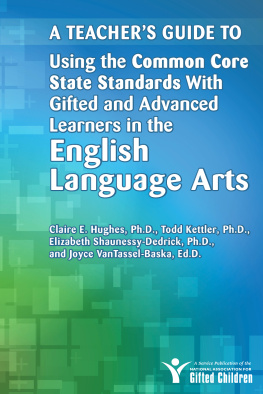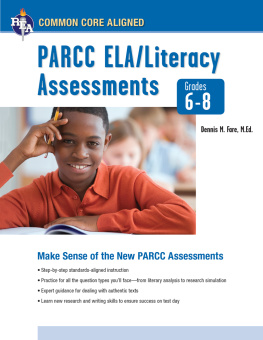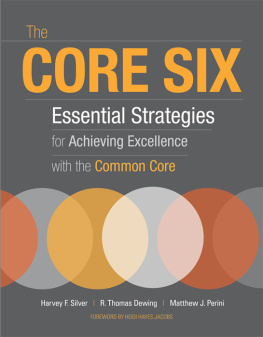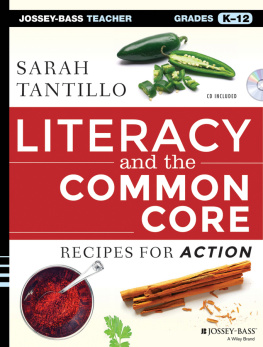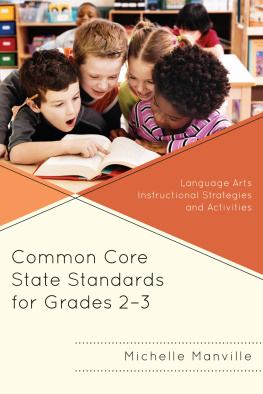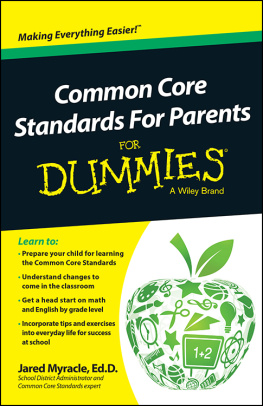Amitra Schwols - Common Core Standards for High School Mathematics: A Quick-Start Guide
Here you can read online Amitra Schwols - Common Core Standards for High School Mathematics: A Quick-Start Guide full text of the book (entire story) in english for free. Download pdf and epub, get meaning, cover and reviews about this ebook. year: 2012, publisher: ASCD, genre: Home and family. Description of the work, (preface) as well as reviews are available. Best literature library LitArk.com created for fans of good reading and offers a wide selection of genres:
Romance novel
Science fiction
Adventure
Detective
Science
History
Home and family
Prose
Art
Politics
Computer
Non-fiction
Religion
Business
Children
Humor
Choose a favorite category and find really read worthwhile books. Enjoy immersion in the world of imagination, feel the emotions of the characters or learn something new for yourself, make an fascinating discovery.
- Book:Common Core Standards for High School Mathematics: A Quick-Start Guide
- Author:
- Publisher:ASCD
- Genre:
- Year:2012
- Rating:5 / 5
- Favourites:Add to favourites
- Your mark:
Common Core Standards for High School Mathematics: A Quick-Start Guide: summary, description and annotation
We offer to read an annotation, description, summary or preface (depends on what the author of the book "Common Core Standards for High School Mathematics: A Quick-Start Guide" wrote himself). If you haven't found the necessary information about the book — write in the comments, we will try to find it.
This close-up look at the structure and content of the Common Core high school mathematics standards is designed to kick off implementation at the classroom level. Teachers will find information on how the mathematical content and practice standards work together across conceptual categories, domains, and grade bands to prepare students for the next level of study, college, or career; practical guidance on lesson planning, including a process for making the best use of the effective instructional strategies explored in Classroom Instruction That Works, 2nd ed.; and sample lessons that illustrate how to approach content likely to be new to their curriculum.
Smart implementation of the Common Core State Standards requires both an overall understanding of the standards and a grasp of their implications for planning, teaching, and learning. This Quick-Start Guide provides a succinct, all-in-one look at
- The meaning of the individual content standards, addressed by domain and cluster, within all five conceptual categoriesNumber and Quantity, Algebra, Functions, Geometry, and Statistics and Probability.
- How the content standards, practice standards, and designated modeling standards connect across domains, categories, grade bands, and traditional course boundaries to help students develop both deep conceptual understanding and functional, real-world application skills.
Here, mathematics teachers and teacher leaders will find information they need to begin adapting their courses and practices to ensure all students master the new and challenging material the standards present and graduate ready for college or career. A practical lesson planning process to use with the Common Core, based on Classroom Instruction That Works, 2nd Ed., is included, along with three sample lessons.
LEARN THE ESSENTIALS OF THE COMMON CORE
The grade-level and subject-specific Quick-Start Guides in the Understanding the Common Core Standards series, edited by John Kendall, are designed to help school leaders and school staffs turn Common Core standards into coherent, content-rich curriculum and effective, classroom-level lessons.
Amitra Schwols: author's other books
Who wrote Common Core Standards for High School Mathematics: A Quick-Start Guide? Find out the surname, the name of the author of the book and a list of all author's works by series.

